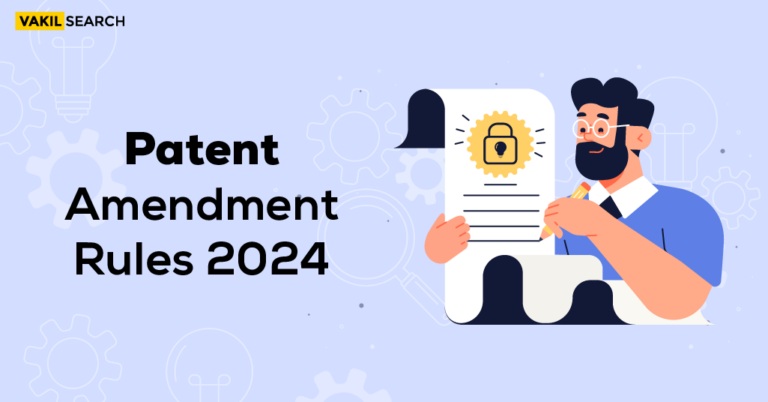A patent is a form of intellectual property that gives its owner the right to exclude others from utilising their invention without authorization. In this article, we will explore whether or not it is possible to extend the life of a patent, the patent application process and the criteria for patentability.
As per the Indian Patents Act, 1970 a patent is granted on a product, a process, or an invention for a limited period of 20 years. Hence, the life span for a patent in India is 20 years from the date of filing the patent application. You simply cannot extend the life of a patent. After its lifespan expires, the invention no longer enjoys patent protection and the invention becomes a part of the public domain. This means anyone can make, use, or sell the invention without the threat of an infringement suit.
As per Section 53, Rule 80 of the Indian Patents Act, 1970 the patent holder must renew their patent right regularly. This is to ensure that the patent remains in force during its lifespan. Therefore, you need to get your patent renewed by paying a small fee every year.
What Is Patent Protection?
Patent protection safeguards an invention against any legal disputes that may arise later on due to the making, using or selling of an invention without the patentee’s permission.
The following is the patentability criteria for an invention:
- Originality – It should be novel
- Industrial application – It should have the capability for industrial application
- Non-obvious – It should have an inventive step with the ability to create new things
- Enabling – It should not come under the provisions of Sections 3 and 4 of the Indian Patents Act of 1970.
Why Apply for Patent First?
An application for a patent should not be delayed because once an invention is publicly displayed, there is no provision to patent it. However, there is an option for getting a provisional patent for 365 days even before the invention is completed. This allows protecting your patent rights before someone can beat you to it.
Hence in all probabilities delay in filing the patent application involves risks that one simply cannot afford. As any other inventor can file a patent on the same invention before you.
Therefore it is advisable to file a patent application before anyone else beats you to it. Get in touch with the experts at Vakilsearch to start the process right away!
The Patent Filing Procedure
The patent filing procedure in India includes the following steps:
1. Evaluate the patentability
The first stage is to decide whether or not to apply for a patent registration. In this regard, a prior art search can assist you in determining the patentability of your innovation. Prior art searches can be conducted using free online patent databases. You can also use the services of a legal service provider such as Vakilsearch to thoroughly examine a patent.
The patentability report based on databases and legal guidance will assist you in deciding whether or not to prepare a patent application. Perhaps what you consider to be novel has previously been patented in some other form. As a result, such reports which evaluate the patentability of your invention will save you a significant amount of time, money, and effort.
2. Prepare a patent application with Invention Disclosure
Write down and submit as many details about the invention as possible, without holding anything back. You must elaborate on the field of innovation, what it is and how it works, its benefits, lab records, technical information, its application in an industrial setting, and most importantly, the claims. This step is best undertaken by the people who have put a lot of effort into the invention during the R&D process.
The process of drafting a patent application is extremely complex and time-consuming, but it is absolutely essential. In the world of patents, the filing date is also quite important.
If you are planning to do it on your own, we suggest you don’t as it must be undertaken by only those well-versed in patent laws. It is highly encouraged that you get the assistance and services of a qualified legal advisor, such as Vakilsearch when preparing a patent application.
3. Publication of the application
After 18 months following the first filing, the patent application is published. If you do not wish to wait so long, you can request early publication by paying the prescribed fees. This early publication request form assures that the patent application is published within a month.
4. Request to process the examining
After receiving a request, the patent examiner at the patent office begins the process of examining the patent application. They will examine the invention for patentability using all of the above-mentioned criteria, including patentability, originality, non-obviousness, industrial application, and others.
A first examination report, as well as a substantive examination report, will be submitted to the controller. Everything done before the grant of a patent is termed patent prosecution.
5. Respond to objections
After examining the report, a majority of the patent applicants receive various objections raised by the patent controller and you must respond to all objections. It is best to seek professional assistance in drafting a response to these objections.
6. Grant of patent
If the invention satisfies all the patentability requirements, the patent will be granted. The grant will be notified in the patent journal of the patent office for the purpose of inviting objections from the public. It is called ‘pre‐grant opposition’.
In case, any opposition objects and succeeds to prove their case party, the patent may still be granted but with limited claims. This will create restrictions on your usage.
If the opposition fails, the patent will be granted along with a certificate for the same. And finally, the patent will be published in the gazette of the patent office.
FAQs on Extend the Life of a Patent
Yes, patent ownership is transferable. A patent owner has the right to grant a license for use or even sell the ownership of a patent.
Yes, you can extend a patent’s lifespan every year by paying the renewal fees as per the prevailing rules and regulations. But its ultimate validity is up to 20 years only. After that, the patent will expire and its validity can not be extended.
Once a patent expires, patent protection also expires. The invention will be made available to the public and anyone can use the invention commercially as well. 1. Is patent ownership transferable?
2. Can a patent’s lifespan be extended/increased?
3. What will happen once a patent expires after 20 years?
Also, Read:











